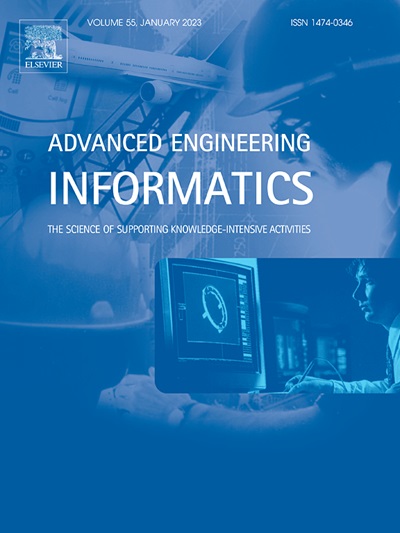Process mechanisms fusion enhanced spatially scalable convolution network for multi-indicator prediction in process industries
IF 9.9
1区 工程技术
Q1 COMPUTER SCIENCE, ARTIFICIAL INTELLIGENCE
引用次数: 0
Abstract
In process industries, the detection of interrelated production indicators, including throughput, quality, etc., is often delay due to the inherent continuity, causing production disruptions and quality issues. Accurate prediction of multi-indicator is crucial, but intricate nonlinear correlations among parameters and indicators pose significant challenges. Data-driven prediction can overcome the challenge of accurately constructing process mechanism models covering the entire production process and all elements, but struggle to infer cross-space migration patterns of parameters’ impacts on indicators. To address this issue, this study proposes a process mechanism fusion enhanced intelligent multi-indicator prediction method for process industries, using the polyester fiber polymerization process as an illustrative case. Firstly, a process mechanism model is established to generate mechanism data encapsulating process mechanisms like coupled relationships and spatial correlations, and these mechanisms are extracted as mechanism features, which are fused with data features to enhance the model’s performance. Secondly, a spatially scalable convolutional neural network is raised, which extracts the implicit deep data features and mechanism features between parameters and indicators from both within-process and cross-process dimensions, utilizing both real and mechanism data. Furthermore, a multi-head self-attention mechanism is employed to adaptively adjust the self-attention weights of the fused features, guiding the model to learn the complex relationships between fused features and enhancing the ability to learn complex coupled relationships and spatial correlations. Finally, the proposed prediction method is validated using polymerization process data and demonstrated superior performance in achieving accurate multi-indicator prediction compared to both efficient machine learning and advanced deep learning methods.
过程机制融合增强空间可扩展卷积网络用于过程工业多指标预测
在过程工业中,由于固有的连续性,包括吞吐量、质量等相关生产指标的检测往往会延迟,从而导致生产中断和质量问题。多指标的准确预测是至关重要的,但参数和指标之间复杂的非线性关系带来了重大挑战。数据驱动预测可以克服准确构建覆盖整个生产过程和所有要素的过程机制模型的挑战,但难以推断参数对指标影响的跨空间迁移规律。针对这一问题,本研究以聚酯纤维聚合过程为例,提出了一种过程机理融合增强的过程工业智能多指标预测方法。首先,建立过程机制模型,生成封装耦合关系、空间关联等过程机制的机制数据,提取机制特征,将机制特征与数据特征融合,提高模型性能;其次,提出了一种空间可扩展的卷积神经网络,利用真实数据和机制数据,从进程内和跨进程两个维度提取参数和指标之间的隐式深度数据特征和机制特征;采用多头自注意机制自适应调整融合特征的自注意权值,引导模型学习融合特征之间的复杂关系,增强模型对复杂耦合关系和空间相关性的学习能力。最后,使用聚合过程数据验证了所提出的预测方法,与高效的机器学习和先进的深度学习方法相比,该方法在实现准确的多指标预测方面表现出优越的性能。
本文章由计算机程序翻译,如有差异,请以英文原文为准。
求助全文
约1分钟内获得全文
求助全文
来源期刊

Advanced Engineering Informatics
工程技术-工程:综合
CiteScore
12.40
自引率
18.20%
发文量
292
审稿时长
45 days
期刊介绍:
Advanced Engineering Informatics is an international Journal that solicits research papers with an emphasis on 'knowledge' and 'engineering applications'. The Journal seeks original papers that report progress in applying methods of engineering informatics. These papers should have engineering relevance and help provide a scientific base for more reliable, spontaneous, and creative engineering decision-making. Additionally, papers should demonstrate the science of supporting knowledge-intensive engineering tasks and validate the generality, power, and scalability of new methods through rigorous evaluation, preferably both qualitatively and quantitatively. Abstracting and indexing for Advanced Engineering Informatics include Science Citation Index Expanded, Scopus and INSPEC.
 求助内容:
求助内容: 应助结果提醒方式:
应助结果提醒方式:


